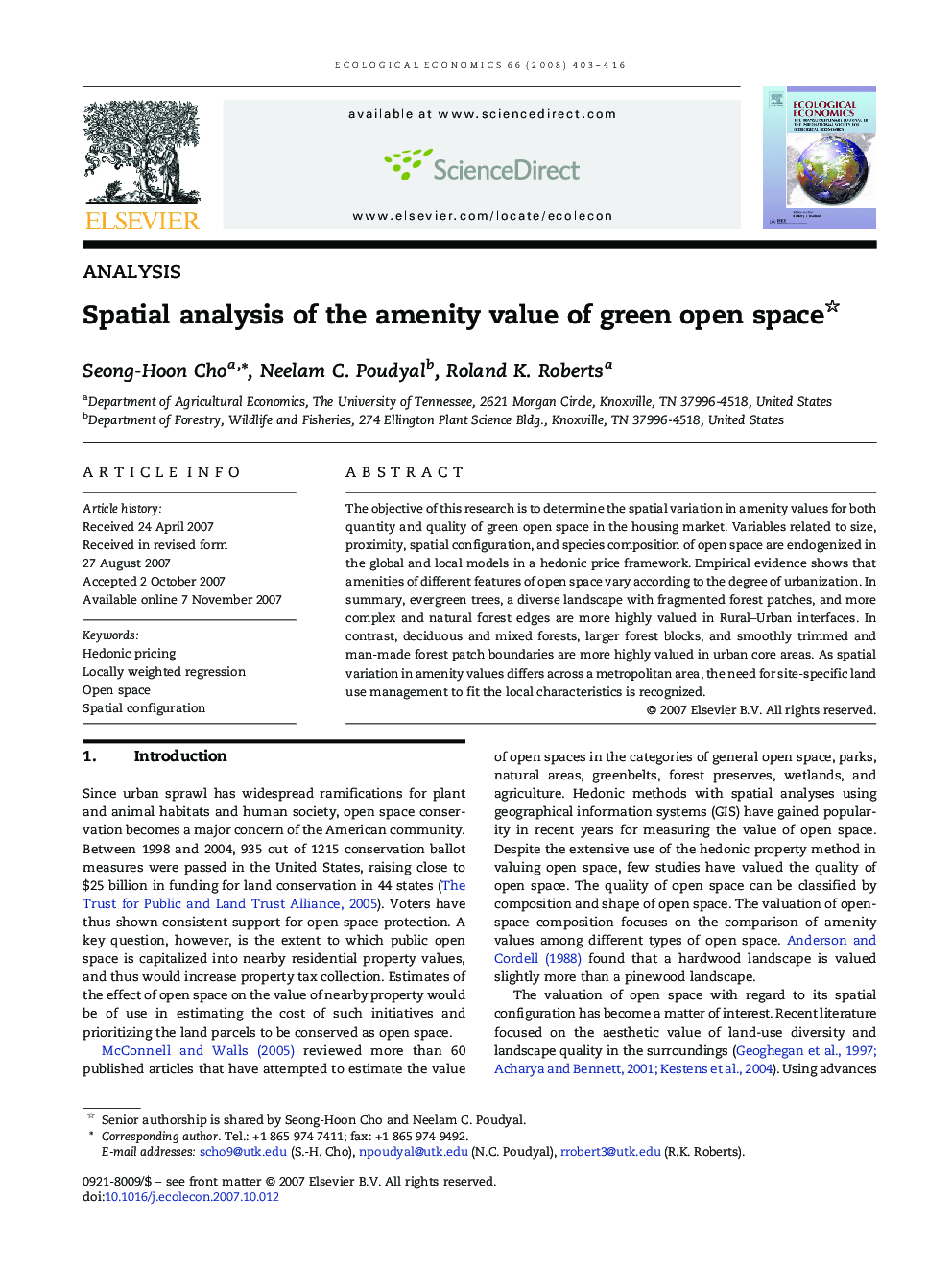| Article ID | Journal | Published Year | Pages | File Type |
|---|---|---|---|---|
| 5051580 | Ecological Economics | 2008 | 14 Pages |
Abstract
The objective of this research is to determine the spatial variation in amenity values for both quantity and quality of green open space in the housing market. Variables related to size, proximity, spatial configuration, and species composition of open space are endogenized in the global and local models in a hedonic price framework. Empirical evidence shows that amenities of different features of open space vary according to the degree of urbanization. In summary, evergreen trees, a diverse landscape with fragmented forest patches, and more complex and natural forest edges are more highly valued in Rural-Urban interfaces. In contrast, deciduous and mixed forests, larger forest blocks, and smoothly trimmed and man-made forest patch boundaries are more highly valued in urban core areas. As spatial variation in amenity values differs across a metropolitan area, the need for site-specific land use management to fit the local characteristics is recognized.
Related Topics
Life Sciences
Agricultural and Biological Sciences
Ecology, Evolution, Behavior and Systematics
Authors
Seong-Hoon Cho, Neelam C. Poudyal, Roland K. Roberts,
